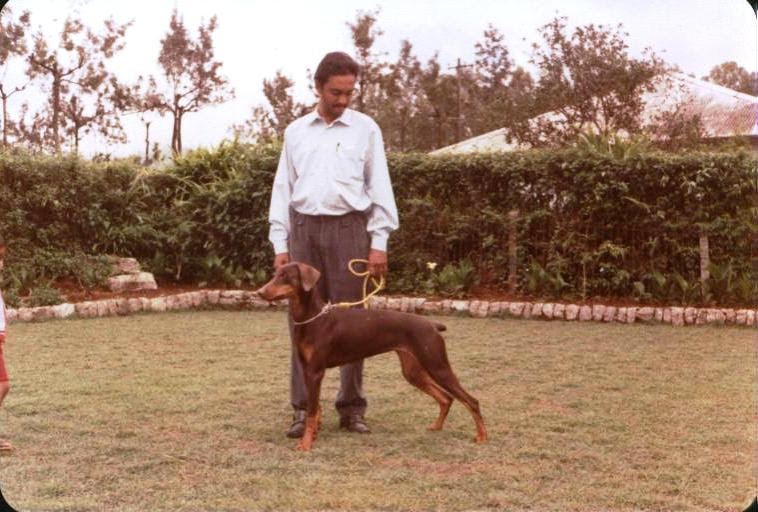Hyderabad Allwyn was the company which produced the first refrigerator in India (certainly in Hyderabad) with Czech collaboration, called Allwyn Prestcold. We had one of the first off the assembly line and its main advantage was that you could make ice cream in the freezer. That fridge stayed with us for 18 years and then was sold for a price higher than what we paid for it and didn’t give a single day’s trouble. You had to regularly defrost it by pouring hot water into the freezer. It needed no other maintenance. It ran silently.
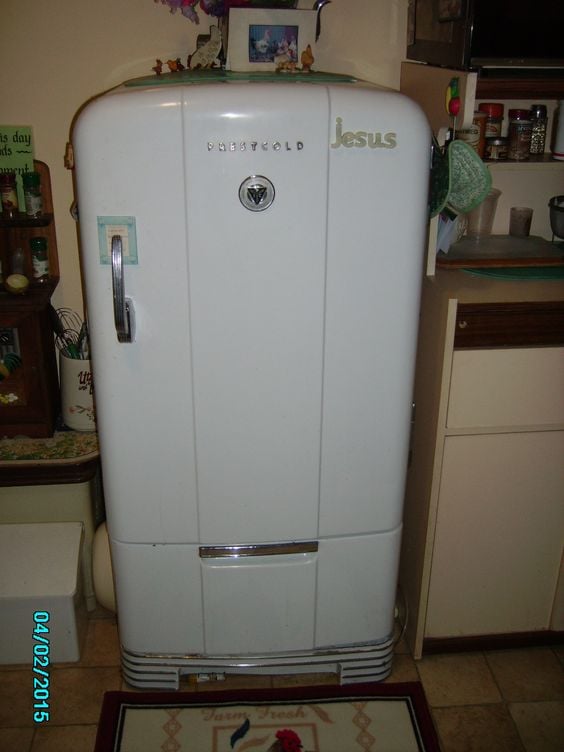
My father was the Medical Officer of Hyderabad Allwyn Metal Works, meaning that he was the company doctor. He had two offices, one inside the factory to attend to emergencies and another beside our house which was a small hospital with a couple of rooms for inpatients. My father was a surgeon and so there was also a small operating theatre, where he performed many minor and major surgeries ranging from vasectomies to cesareans to removal of kidney stones. These were the days in the late 50’s and early 60’s in India, when diagnosis based on clinical examination was the norm. The only diagnostic equipment available was the X-Ray machine. So, blood, urine and stool tests, blood pressure check and an X-ray or two and you were ready to go under the knife. A shadow-less operating lamp in the theatre was big news. Doctors of my father’s generation were masters at clinical diagnosis. Just by looking at you, they could tell what was wrong with you, your children and your marriage. This was the result of excellent observation related to a thorough knowledge of symptoms of different ailments. What helped them was both the variety of patients they saw as well as the sheer numbers. This gave them a huge database of knowledge to be able to diagnose cases which puzzled others. In more than six decades of practice, involving thousands of patients, I have never known my father to make a single wrong diagnosis.
Physicians of that generation were legendary. They commanded huge respect in society on account of their principles. Advertising medical services was a cardinal sin and something that was considered shameful. No doctor or hospital did it. A doctor’s skill was seen in how cheaply he could bring about a cure, so doctors prescribed the bare minimum of medicines. They paid much more attention to diet, lifestyle, habits, addictions (in Hyderabad it was cigarettes and pan – betel leaf wrapped around betel nut, lime and a tobacco extract called Zarda). Doctors believed that their role was to prevent illness, not only to prescribe cures for it. They believed in service and people like my father not only prescribed medicines but even gave them free to needy patients. Bedside manners were a major element of medical practice and there were people like Dr. Mannan in Hyderabad about whom people used to say, “Seeing him cures 75 % of the illness and his medicine cures the other 25%.” You almost looked forward to falling sick because the visit of the doctor was so nice. House visits were very common, and doctors didn’t charge a fee to visit or treat the family of another doctor. For a doctor to charge a fee to treat another doctor or his immediate family was considered an insult to the brotherhood of doctors. A doctor never lied or cheated, and I don’t know of a single case of medical malpractice. Many years later, long after my father had retired, he went to see a doctor for some ailment and was shocked and furious when that doctor charged him a fee. Not that the fee was large, but because he saw it as a breach of the brotherhood code of honor. ‘How can he charge me a fee? I have treated doctors and their families without charging a single paisa all my life. And today a doctor charged me a fee to tell me what I already know?’ Medical practice then was a very far cry from the pure money-making machine that it has become today, at least in India.
I believe that the commercialization of medical care and education are the two major causes of social corruption and breakdown of values in our society. How we were unable to transfer the wonderful values we grew up with to our own children, remains a mystery to me. It is not that there were no corrupt people. It is that they were not accepted in society and so had to hide. Today corruption is not only accepted but is seen as a sign of intelligence and being worldly wise and people who stand against it are seen as stupid and naïve. Corruption is an aspirational goal in India. How did this happen?
We lived in the management colony near Allwyn, called Czech Colony. That was because the colony was first built for the Czech engineers who first came to build Bren guns and then after the war started making the refrigerators for which Allwyn became famous. The Bren gun was a licensed version of the Czechoslovak ZGB 33 light machine gun. The house was built in the colonial bungalow style with four bedrooms and two bathrooms – one bathroom between two bedrooms. Bathwater would be heated outside the house in a large Samovar on a wood fire because we didn’t have electric storage heaters (geysers) in those days. There was no running hot and cold water or mixer taps for showers. Both water and electricity were scarce and we learnt to bathe in one bucket (15 litres) of water. Half of it came from the Samovar and the rest was the cold water you added to get it to the temperature you desired. The house was set on a quarter of an acre of land, had a garage, two servant’s quarters and a kitchen outside the main house. The roof was made of wooden rafters covered with Mangalore tiles but without a ceiling so that you could see the tiles. At night waiting for sleep, you lay on your back and gazed at the ceiling, a rich orange/brown that darkened in the monsoon after absorbing rainwater.
In heavy rain it would leak in one or two places where the tiles had cracked, and you would put a bucket under the leak to prevent the water from puddling on the floor. Later someone put in a ceiling of asbestos sheets before anyone knew of the ill effects of asbestos. The house had a veranda in front and at the back. The back veranda was used as an extension of the kitchen and a servant’s hangout area. The front veranda was a reception area, especially for relative strangers who you didn’t really want to invite into the main drawing room. The veranda was furnished with four cane chairs and a low table. The central hall was a drawing cum dining room with doors to the bedrooms and the bathrooms off it. The house was cool in the summer and warm in winter, airy and light.
I have always been very fond of animals and had chickens and ducks and six dogs. The chickens were the common Indian variety which we call country chickens. We have many indigenous breeds of poultry in India, and I am sure that what we find in the villages are the result of interbreeding among many of them. Indian chickens are amazing creatures. They are almost feral to begin with, and forage on their own. I used to throw my chickens a couple of handfuls of grain (jowar – a variety of millet) in the morning and another couple of handfuls in the evening and for the rest of the day they would forage all over the garden. When the hens were ready to breed, they would make their calls and the rooster would chase them all over the garden to mate with them. Then he would get off the crouching hen, ruffle his feathers and announce his feat to the whole world with a magnificent crow. When the hens were ready to lay eggs, they would start calling – cook-cuk-cuk-cuk-cuk-coook – and you had to be watchful and ensure that you got them used to going into the pen to do so. Otherwise, the hen would find her own place and once she started laying in one place, she would lay all her eggs in the same place.
I was slow once and one of them decided that she wanted to lay her eggs on top of a pile of shirts in my cupboard and that is what she did. Every day she would march up the steps into my bedroom, go to the cupboard and peck at it and make a lot of noise until someone opened it for her. Then she would hop up the shelves cackling loudly all the while, until she got to her shelf and settled down on the pile of shirts. Then she would concentrate. You must see the expression on the face of a concentrating hen to know the meaning of single-minded focus. Then the egg would start to appear from her posterior, and she would be totally lost to the world until the egg emerged and dropped. The hen would then spin around and look at the egg with a look of huge surprise on her face and loudly proclaim, cuk-cuk-cuk-cuk-cukkaak – as if to wash her hands of the act. And then she would come out of the cupboard and leave and not return until next morning. May Allah bless my mother who though she disliked this whole thing, never chased that hen away.
When one period of egg laying was done, usually fifteen eggs at the most, the hens become broody and very cranky. They undergo a complete personality change. A perfectly friendly and chatty hen would turn into a crotchety old puss, unwilling to see reason. But settle her down on a set of eggs and she is very happy. Most hens sit with great dedication, but we used to be convinced that those with short legs made better hatchers than ones with long legs. It is very interesting to see how the broody hen would roll the eggs around while sitting on them so that they were evenly heated under her. Later when the chicks were ready to emerge, she would help them to break the shell of the egg by giving it a peck or two. Twenty-one days later the chicks would hatch, and the mother would bring them out and show them off. It used to be an endless source of delight for me to see how she taught them what was good to eat and what wasn’t. And how she looked after them, saving them from hawks and crows and how in the heat of the afternoon she would sit under a bush with the chicks nestled under her wings, little heads peeking out to look at the outside world.
Hens have a variety of calls; calling chicks to eat something, alarm calls, calls of anger before the hen literally flies in your face in defense of her chicks, calls to announce that she is ready to lay eggs, and calls to say that she just laid an egg. Roosters also have a variety of calls apart from their crowing. They also call hens to eat some choice morsel that they found for them. They have their alarm call to warn either of a dog in the vicinity or a coasting eagle or hawk in the sky and then they have a call when they are calling a hen for a bit of romance. Indian chickens have distinct personalities, and you can predict their behavior. I had a rooster who would stare down one of my Dobermans who didn’t like him at all. I was always apprehensive that the dog would bite off his head but that never happened, and the cock never gave ground. To see them facing off with the cock, his head lowered between his shoulders, neck extended with all feathers standing, buzzing deep in his throat, and the dog’s teeth bared, literally baying in anger was something else. I wish I’d had a camera to record these sights but as I’ve said before, I was poor in those days.
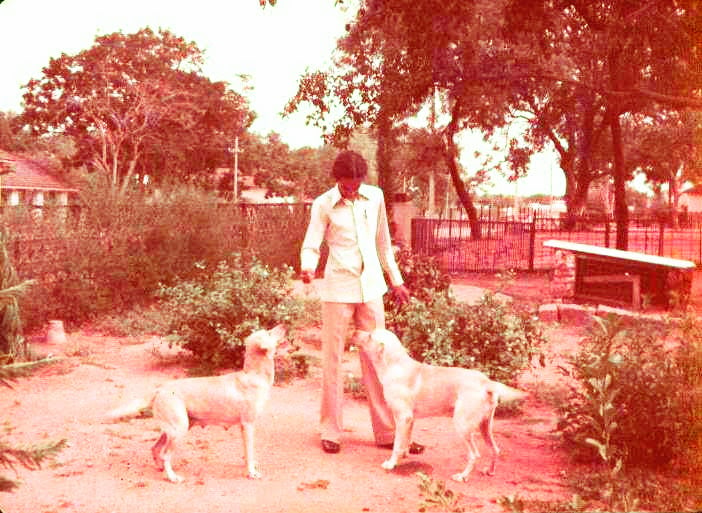
As I mentioned I had six dogs. A pair of Alsatians (German Shepherd), the female called Lotta, and the dog who was white, called Fury. A pair of yellow Labrador Retrievers, the male was off-white and called Ben and the female was yellow, called Poppins. The fifth was a Dachshund, a black and tan male, called Sargent. The sixth was a Caravan hound called Julie. Caravans are an ancient breed that came to India accompanying the trading caravans from Arabia across Central Asia. They are closely related to the Saluki but without the feathering (hair borders) on the ears and tail. They are used both as guard and hunting dogs and make excellent companions. They have a beautiful temperament, the result of centuries of breeding by caravanners, who kept their dogs as pets and work animals. The dogs lived in the tent with the family and so a good temperament and high intelligence were essential. My parents were very understanding about all my pets but there was one inalienable rule – they were my pets and entirely my responsibility. If I couldn’t look after them, then depending on what the pet was, it would be eaten or given away. But nobody else would look after whatever I decided to adopt. I was perfectly happy with this rule and so a lot of my time was spent in looking after this whole brood. I would get meat for the dogs, cattle tripe which was the cheapest at Rs. 0.50 per kilo from the butcher and cook it with broken Jowar (Millet) meal, in a pot set on three bricks with a wood fire under the Peepul tree. They got one meal a day and lived very healthy lives on that. If they got sick, I treated them. Once Ben went through a barbed wire fence and lacerated himself, so I stitched him up and injected him with antibiotics. We had no vets and even the ones we had didn’t know dogs. They knew buffaloes and cows. So, if dogs or cats needed anything you had to figure out what to do and do it. Being a doctor, my father would give me advice but would leave me to do the work. In short, if something needed to be done with the pets, I had to do it. That is what leads to the next story.
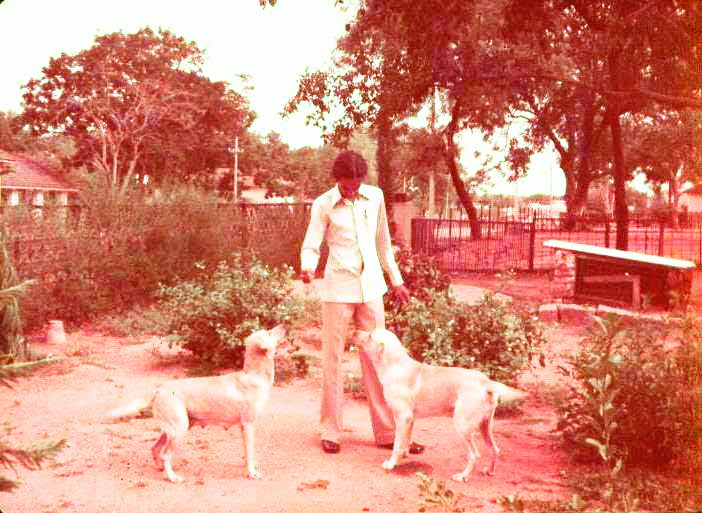
Poppins decided to multiply, and Ben did the honors. Poppins grew bigger and bigger and then one night close to 10 p.m., Poppins started searching for a place to give birth to her puppies. I was in a flap. My father told me, ‘Make sure you open the amniotic sac otherwise the puppy will drown in amniotic fluid.’ I wasn’t exactly an expert midwife but what else could I do? Poppins decided that the best place for her puppies was the bathtub in my bathroom. So, I put some empty hessian sacks in the bottom of the bathtub, and she settled down. She had become extremely aggressive and wouldn’t allow anyone except me to come near her. I sat with her and fed her some warm milk, waiting for whatever was to happen, to happen. After about two hours or so, just past midnight, she started to give birth. It was her first time, and she had no clue what to do. She was too well bred, and all her natural instincts had been lost. She just brought out the puppy and looked at it. I had to cut the umbilical cord, cut open the amniotic sac and give her the puppy to lick it clean and then put it to her udder for it to feed. Mercifully she knew enough to do that, or I wonder how far I would have had to go to facilitate the birth of these puppies. By the time the night passed she had given birth to eight puppies, all healthy and happily nursing and I was the proud midwife who delivered eight Labrador puppies.
All these dogs had their own distinct personalities. Ben was full of joy always and very friendly. But he was fussy with food. He was very devoted to me and would stop eating if I went out of town. My mother would then hand feed him or he would just lie outside the door of my bedroom and moan all day long. Lotta lived only to eat. She was like a vacuum cleaner before her food. She would simply suck it in and then look very surprised and search high and low to see where it had disappeared. Poppins was spaced out. She always had a surprised expression on her face and went through life as if it was all happening to someone else.
The white Alsatian, Fury was a story in himself. The father of one of my classmates bred Siamese cats. He had twenty-two of them at home. He also had this white Alsatian which used to be tied outside the house as the cats took precedence. One day I went to visit my classmate, I found the dog tied outside the house looking very miserable as the cats didn’t like him at all. I asked my friend’s father if I could borrow Fury for a few days. He agreed and I brought Fury home. He stayed with me for a few days and then true to my word, I took him back. Then the trouble began. Fury started yelping and barking wildly when I started to leave. He made such a huge racket that I decided to literally make a getaway and left. But two hours later I got a call from his owner saying, ‘The dog is driving us all crazy. He refuses to quieten down. So please come back and take him and you can keep him.’ And that is how Fury came to live with us. He was totally devoted to me and got along with the other dogs and settled in as if he had always been with us.
Sargent the Dachshund was hugely jealous and wouldn’t allow anyone other than my mother to approach me and would growl ferociously. I don’t think he meant any harm and never did anything to anyone, but his growl was bad enough. Dachshunds are little big-dogs. They are the only small breed that I care for. Julie, the Caravan hound was a wanderer. She would clear the six-foot fence around our house without touching anything and would be gone, sometimes for days. Then she would reappear on her own. I lived in fear that she would get run over on the road. But she didn’t. Clearly, she was a woman about town and knew how to take care of herself.
Keeping pets and looking after them is a very powerful part of upbringing to teach responsibility. Dogs give their love completely and unconditionally and nothing pleases them more than to see that you are pleased. Cats are choosy and for the cat she always comes first. You are a means for her comfort, and the cat doesn’t give a damn whether you are pleased with it or not. Both dogs and cats communicate, but differently. Dogs are vocal and demonstrative. Cats are mostly silent but very sensitive to emotions. Especially if you are sad, a cat will simply come and sit in your lap to comfort you. It knows that you need company, not necessarily advice. Dogs are hugely sensitive to atmosphere and can sense tension in the home and react with fear and look for corners to hide. Both are very responsive to calmness.

Dogs respond to training differently. Dobermans consider everything a task to be handled aggressively. Labradors are convinced that life is a game to be played to have the greatest fun. Alsatians can be temperamental. Dachshunds are big little dogs without the yappiness of small dogs and with the confidence of the big breeds. Many years later, the best dogs I ever had were a Doberman bitch called Bonnie who was more human than animal and a magnificent Rottweiler called Hooch who was the most intelligent animal I’ve ever encountered. Unlike his breed, he was the gentlest animal that I have ever known. His appearance was the only intimidating thing about him. He almost never barked except at the monkeys which used to raid the orchard in our bungalow compound. Training, which would take me days of practice with other dogs, Hooch learnt in the first instant and never forgot. He was a wonderful companion and would run ahead of me as I rode my horse on the rubber estate that I was manager of at the time.
My friend and assistant Suresh Menon used to play a game of trying to stare him down. Most if not all dogs, to the best of my knowledge will look away after a couple of minutes, if you stare at them. They can’t take the tension and don’t like it. But not Hooch. He would stare back at Suresh for as long as Suresh stared at him. It was Suresh who would get tired of this game first. My bungalow had a very large compound in which we were always fighting an uneven battle with the jungle which constantly threatened to take over. One of the legacies was snakes and Hooch died of snakebite when he attacked a cobra and caught it in the middle of the body and the snake whipped back and bit him in the face before he bit it in half. You must experience the companionship of a great dog to know the meaning of companionship. And that is why the grief when one dies. It is like losing a child.
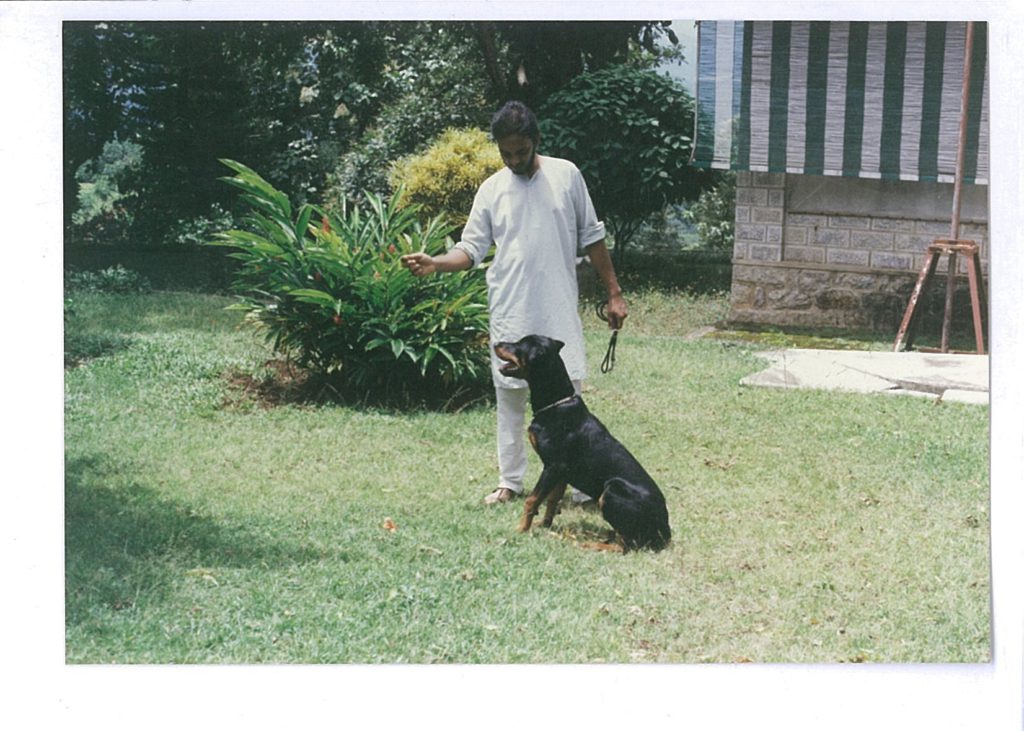
Czech colony which I mentioned earlier where I spent 15 years of my childhood, had no Czechs in it when we lived there. It, however, had the highest concentration of Marwaris outside Rajasthan. All families who lived there except us and one or two other families were Marwari. We had Kotharis, Sultanias, Singhvis, Panchulals, Jains, and Agarwals. Hyderabad Allwyn Limited was established in January 1942 as Allwyn Metal Works. It was started as joint venture of Industrial Development Trust of the Nizam of Hyderabad’s Government and Alladin & Company. Later it passed into the hands of the Birlas briefly and was then taken over by the AP State Government and eventually run into the ground. However, the time that I am writing about, Allwyn was doing well with the largest selling refrigerator in the country and was famous for building bus bodies for the APSRTC.
What I recall about those years in Czech Colony was the complete harmony that we lived in. We children were in each other’s houses and were treated like the children of the family we happened to be with. Our closest friends were the Kotharis and we were treated like their own children by Mr. and Mrs. Kothari and their children were treated like us by my parents. We participated in whatever was going on in each other’s lives and homes. We studied together, played together, ate together and never treated anyone as different. It is not that we were not aware of our differences. All these Marwaris were the strictest of vegetarians, but we ate with them and they ate with us and lived very happily together for all those years. I am amazed at the stress and strife that religion has caused in my country and recall my own childhood and once again ask myself the same question, ‘How did we manage to lose all that so quickly?’
